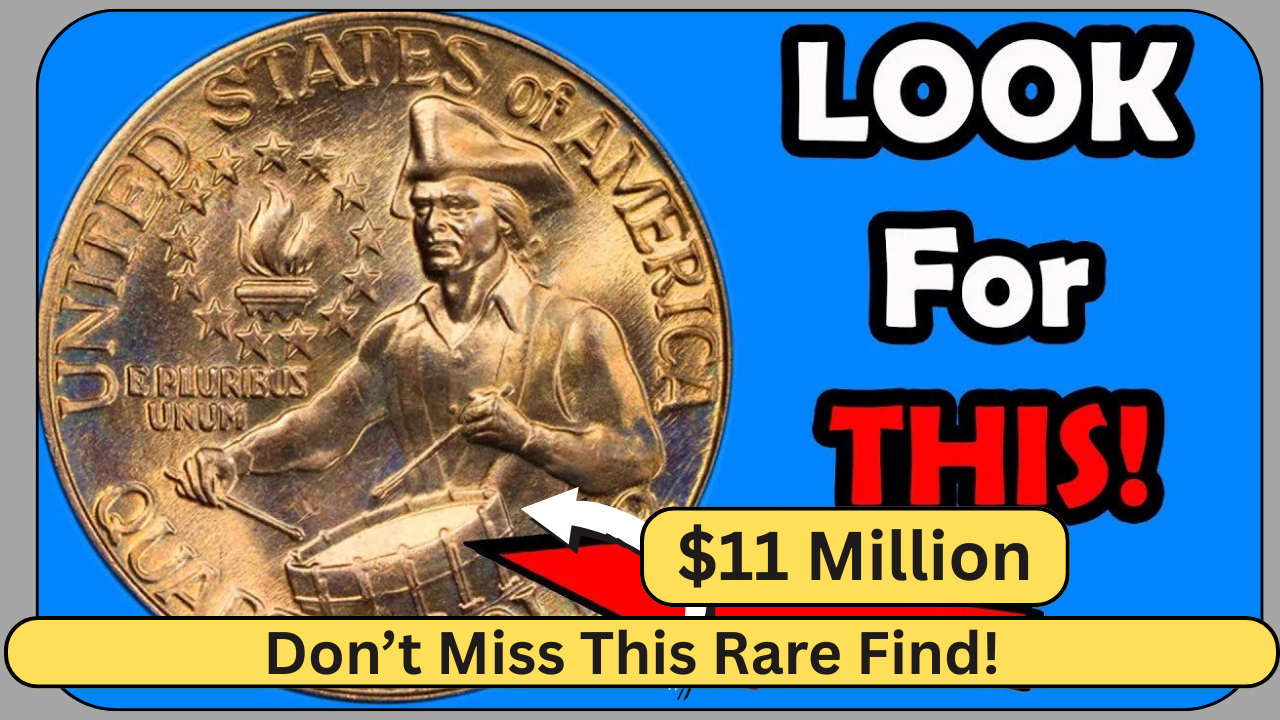Imagine finding a quarter in your wallet worth $11 million! The 1976 Bicentennial Quarter, minted to celebrate America’s 200th birthday, has some rare versions that could make you rich. While most of these quarters are worth just 25 cents, a few with special errors or materials have sold for jaw-dropping prices, with one rumored to fetch $11 million at auction. X users are buzzing, with one saying, “Checked my coins and found a silver 1976 quarter—fingers crossed!” As the U.S. nears its 250th anniversary in 2026, these coins are hot among collectors. Here’s how to spot this treasure and what makes it so valuable.
A Coin with History
The Bicentennial Quarter was minted in 1975 and 1976 to mark 200 years since the Declaration of Independence. It features George Washington on the front with a “1776-1976” date and a colonial drummer boy with 13 stars on the back, designed by Jack L. Ahr. Over 1.6 billion were made in Philadelphia (809 million, no mint mark), Denver (860 million, “D” mark), and San Francisco (11 million uncirculated and 4 million proof silver coins). Most are copper-nickel, but some San Francisco coins are 40% silver, and a few rare ones may have unique errors. X users say, “The drummer boy design is so cool—makes hunting fun!”
Why It’s Worth Millions
The $11 million quarter is likely a one-of-a-kind error coin, possibly struck on a 90% silver planchet meant for proof sets or even a gold prototype, though such claims are debated. Its value comes from rarity, minting mistakes, and pristine condition (like MS-68 or higher). Errors like doubled dies (blurry letters or dates) or wrong planchets (like silver instead of copper-nickel) drive up prices. A 1976-S silver proof sold for $13,500 in 2019, and a double-struck version hit $11.2 million in 2024, per auction reports. Experts say these coins slipped into circulation, so one could be in your change
How to Spot the Treasure
You don’t need to be a coin expert to find a valuable quarter. Check these details:
- Mint mark: Look under Washington’s neck for an “S” (San Francisco, often silver), “D” (Denver), or no mark (Philadelphia).
- Weight: Regular quarters weigh 5.67g; silver ones are 5.75g, and gold prototypes are heavier.
- Edge: Silver coins lack the copper stripe seen on copper-nickel quarters.
- Errors: Use a magnifying glass to spot doubled letters on “LIBERTY” or the dates.
X users suggest, “Check coin rolls from banks—found a silver one last week!” If you find a shiny, heavy quarter, don’t clean it—cleaning hurts value.
| Feature | Rare Bicentennial Quarter Details |
|---|---|
| Mint Mark | “S” (San Francisco), “D” (Denver), or none (Philadelphia) |
| Material | 40% or 90% silver, rare gold prototype |
| Weight | 5.75g (silver), heavier if gold |
| Value (Rare) | $1,000–$11 million (errors, condition) |
Where to Find It
These rare quarters could be anywhere—your pocket, a coin jar, or a store’s cash register. With over 1.6 billion minted, many are still in circulation, especially copper-nickel ones. Silver versions from San Francisco (15 million total) are rarer but have turned up in change, vending machines, or family collections. Stories of finds, like a $4.6 million quarter in a soda machine, keep hunters excited. Check bank rolls, flea markets, or old piggy banks. X users share, “Found a 1976-S in grandma’s jar—getting it graded now!”
What to Do If You Find One
If you think you’ve got a rare quarter, handle it by the edges and store it in a soft plastic holder. Don’t clean it, as scratches or wear can slash its value. Take it to a coin dealer or grading service like PCGS or NGC for authentication. They’ll check for silver content, errors, or high grades (MS-68+). Even non-million-dollar versions, like silver proofs or doubled dies, can fetch $10–$14,000. Auction houses like Heritage or Stack’s Bowers can sell it for top dollar. X users warn, “Avoid scams—only trust certified graders!”

